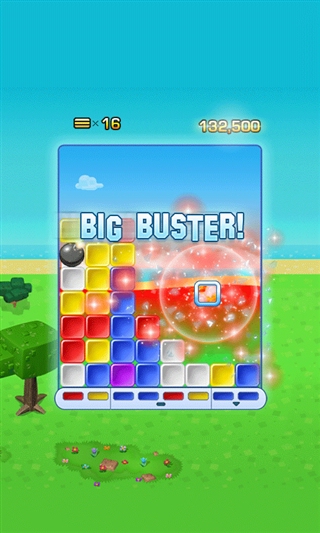
The money, the glamourous trips abroad, and the almost ceaseless attention from beautiful people is all very well, but the world of mobile games journalism has one major pitfall: you have to play one hell of a lot of match-three games.
By rights, GameHouse's Collapse – no spring chicken, having originally appeared on the web many moons ago - has no right to bring anything fresh to the genre.
The game's decision to merge standard match-three play with one of the most celebrated, and thus emulated, games in history in the form of Tetris sounds like banality defined on paper.
In practice, however, Collapse delivers in the one respect that every match-three game since the beginning of time has strived to deliver: it's damned addictive.
Match of the day
One of the game's big draws is its incredibly simple control method.
Playing on a grid, your aim is to stop Collapse's blocks reaching a pre-defined line at the top of the level, tapping matching groups of three or more as the cubes rise from the bottom.
In the game's classic form - which makes up the bulk of Collapse's Quest mode early on – picking up a rhythm comes quite naturally.
Every group of coloured cubes you touch is wiped from play, with the blocks either side snapping together to fill up the space left over.
Rather than simply clearing matches if and when they come up you need to take a more strategic approach, looking ahead and clearing coloured groups that subsequently bring together further match-ups.
Long and short of itWhat makes Collapse clever is the very make up of the blocks that rise up from below. The game positively encourages you to think carefully about which match-ups you go for.
Being too trigger happy and tapping the first groups you spot soon results in an awkward collection of mismatching blocks stacking up in one area of the grid or another. Once you've allowed such collections to amass, it's incredibly hard to rid yourself of them later on.
But the other area where Collapse brings a level of class is the structure of its Story mode, which breaks up any sense of monotony by allowing you to spend credit earned in play on upgrades and bonuses.
Some of the most common are bombs in one form or another, which the game then drops randomly in among the stages themselves, letting you clear either whole areas of play or all blocks of one colour.
Block party
In a nice touch, you can even personalise your avatar – naturally, a bomb sporting a pair of eyes – but the best thing about Collapse is still its core gameplay.
Aside from Classic, a total of six other play modes are on offer, all of which subtly shift the rules without making the formula unrecognisable.
The steady addition of specialist blocks – which can do everything from switch around the order of those in play to acting as immovable objects cluttering up the maps – also helps keep things tracking forward, and even though you quickly feel comfortable with what Collapse has to offer you never really tire of it.
As such, Collapse's legacy is to prove that it's still possible to move the match-three formula on without doing anything radical with it.
Indeed, by playing by already established rules, GameHouse's latest will appeal to the genre's masters from the off, giving even weary critics like myself a reason to get tap happy all over again.
Collapse

